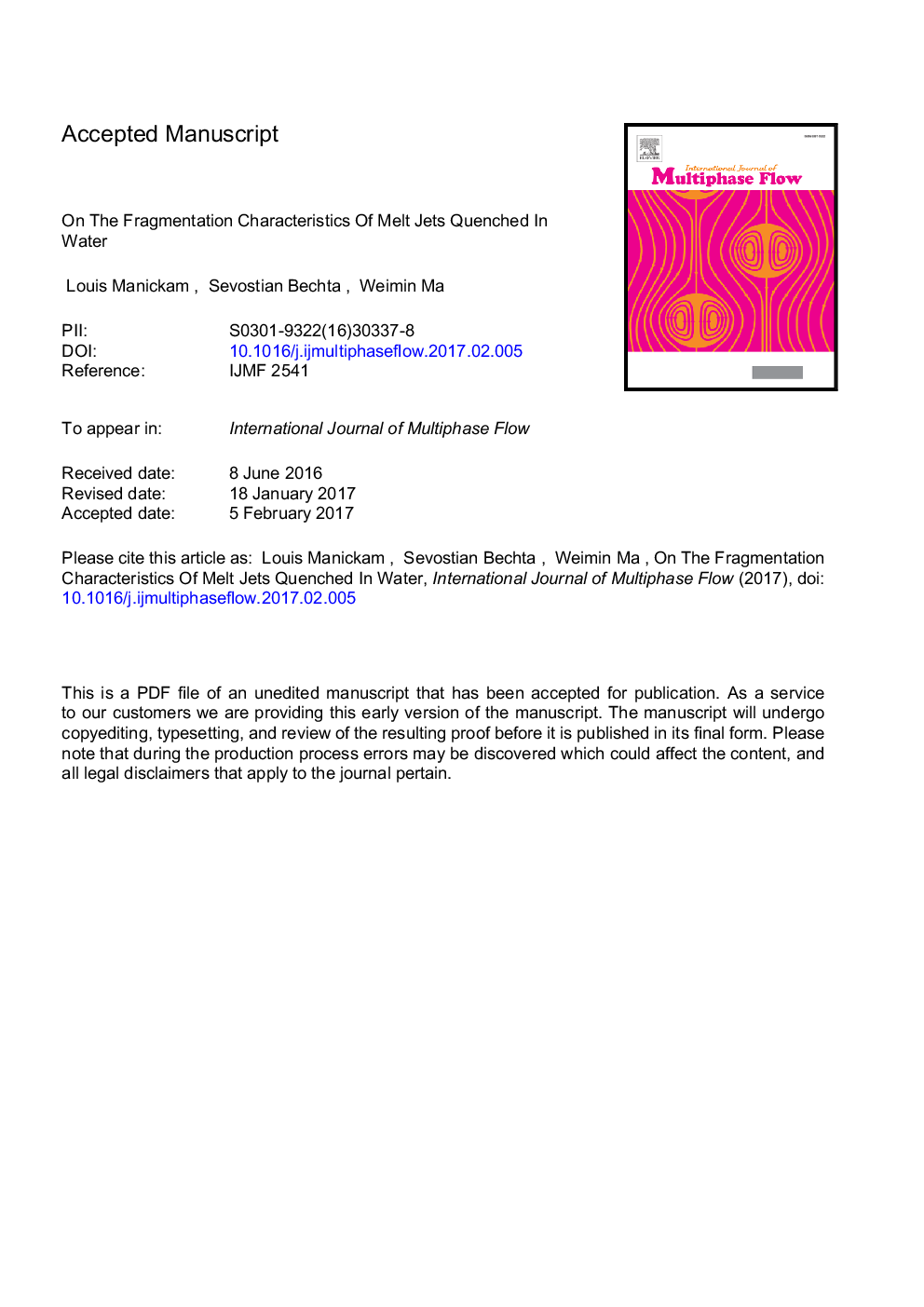| Article ID | Journal | Published Year | Pages | File Type |
|---|---|---|---|---|
| 4994980 | International Journal of Multiphase Flow | 2017 | 33 Pages |
Abstract
Experiments were carried out to investigate the characteristics of jet breakup and debris formation after melt jets fall into a subcooled water pool, which may occur in industrial processes such as the interactions of molten corium with coolant during a severe accident of light water reactors. A high-speed visualization system developed previously at KTH was used to capture the jet fragmentation phenomenon. Molten metal (Woods metal or tin) and mixture of binary oxides (WO3-Bi2O3 or WO3-ZrO2) were employed separately as melt materials to address different breakup mechanisms (e.g., hydrodynamic vs. thermodynamic fragmentation) and material effect. Moreover, the parameters related to melt and water conditions, including superheat, jet diameter and velocity of melt as well as subcooling of water, were scrutinized for their influences on jet fragmentation characteristics. The experimental data were acquired on the melt jet fragmentation patterns, breakup length, droplet size spectrum, droplet breakup and solidification as well as debris morphology, which can be useful for validation of the codes used for the prediction of debris formation phenomena.
Related Topics
Physical Sciences and Engineering
Chemical Engineering
Fluid Flow and Transfer Processes
Authors
Louis Manickam, Sevostian Bechta, Weimin Ma,
